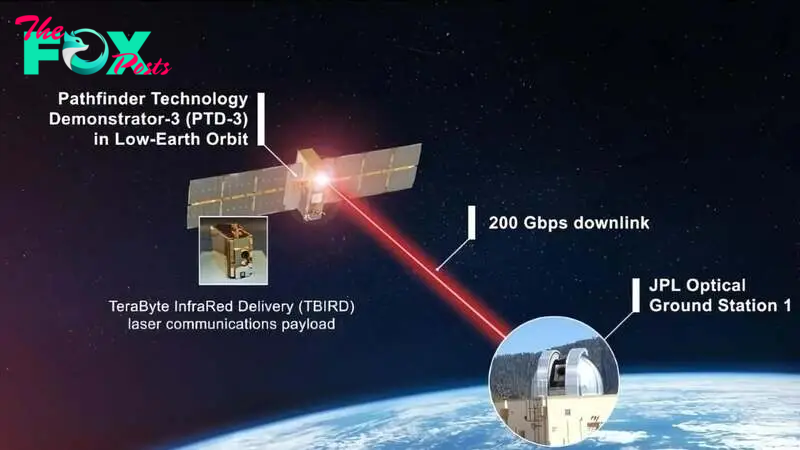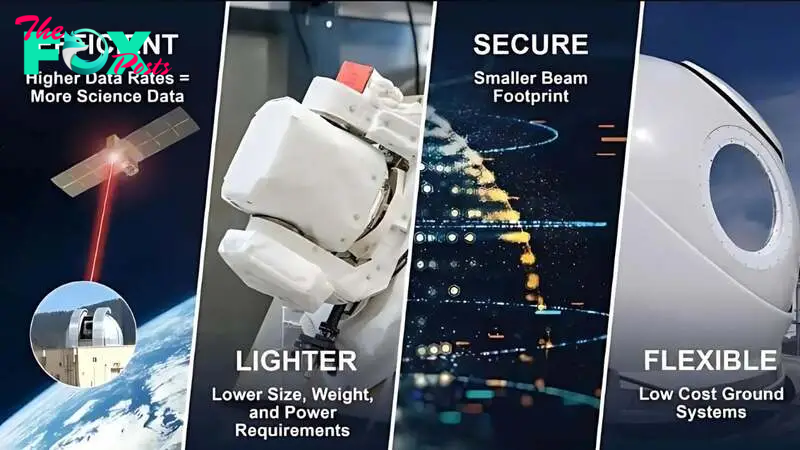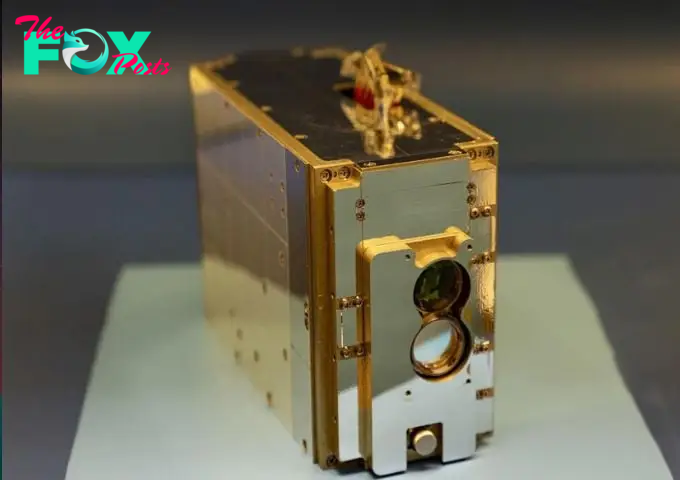Technology
NASA’s Laser Demo Sets Records, Successfully Completes Mission
NASA's TBIRD (TeraByte InfraRed Delivery) demonstration, along with its host spacecraft, PTD-3 (Pathfinder Technology Demonstrator-3), has successfully completed its Technology demonstration. Over the past two years, the TBIRD payload has set new world records for the fastest satellite downlink using laser communications.

An artist’s concept of the Pathfinder Technology Demonstration -3 carrying the TeraByte InfraRed Delivery payload. NASA/Dave Ryan
An artist’s concept of the Pathfinder Technology Demonstration -3 carrying the TeraByte InfraRed Delivery payload. NASA/Dave Ryan
The PTD series uses a standardized commercial spacecraft platform, enabling efficient testing of new technologies with minimal adjustments between launches. Following its May 2022 launch on the SpaceX Transporter-5 mission, PTD-3 entered low-Earth orbit, where TBIRD began transmitting laser communication signals to an optical ground station at Table Mountain, California.
TBIRD's two-year demonstration proved the effectiveness of laser communications. While most NASA missions use radio frequency systems, laser communications, which use infrared light, can transmit far more data in a single link. This makes it an ideal solution for Science and exploration missions requiring large-scale data transfers.

NASA’s Laser Communications Roadmap – proving the Technology’s validity in a variety of environments. NASA/Dave Ryan
In 2023, TBIRD consistently broke its own records, peaking in June when it transmitted 4.8 terabytes of error-free data—equivalent to about 2,400 hours of HD video—in just five minutes at a rate of 200 gigabits per second during a single pass.
The completed TeraByte InfraRed Delivery (TBIRD) payload at the Massachusetts Institute of Technology Lincoln Laboratory. Massachusetts Institute of Technology Lincoln Laboratory
The TBIRD payload was among several laser communications demonstrations. NASA’s Space Communications and Navigation (SCaN) program is advancing this technology to highlight how laser communications can enhance the return of science and exploration data. The next demonstration is set to take place on the Artemis II mission.
Alongside setting a world record, the mission showcased a cost-efficient design with minimal size, weight, and power demands—both for the PTD-3 spacecraft and the TBIRD payload. The payload, about the size of a tissue box, housed two commercial telecom modems that the TBIRD team adapted for the harsh conditions of space.

The benefits of laser communications: more efficient, lighter systems, increased security, and more flexible ground systems. Credits: NASA/Dave Ryan
The PTD-3/TBIRD system successfully tackled one of the key challenges of laser communications: maintaining a stable laser link despite moving at orbital speeds and experiencing atmospheric drag. Thanks to the PTD-3 spacecraft’s precise “body pointing” and stability, the TBIRD payload achieved its record-breaking feat while Travelling at speeds of up to 17,000 mph.
Additionally, the spacecraft set a new record for the most accurate pointing ever accomplished by a NASA CubeSat, doing so without any moving mechanisms or propulsion systems.

The completed TeraByte InfraRed Delivery (TBIRD) payload at the Massachusetts Institute of Technology Lincoln Laboratory. Massachusetts Institute of Technology Lincoln Laboratory
The conclusion of the PTD-3 and TBIRD mission was anticipated, as the system lacked a propulsion mechanism, meaning its time in low Earth orbit was limited until its orbit naturally decayed.
Originally intended to operate for just six months, TBIRD exceeded expectations, conducting its demonstration for more than two years. This extended period allowed NASA to gain valuable insights into laser communication operations in low Earth orbit.
The knowledge gained from TBIRD will be applied to future laser communication systems, helping to reduce downlink limitations and enhancing mission designs for upcoming exploration and scientific discoveries.
-

 Technology1d ago
Technology1d agoBreaking up Google? What a Chrome sell-off could mean for the digital world | The Express Tribune
-

 Technology2d ago
Technology2d agoAI harm is often behind the scenes and builds over time – a legal scholar explains how the law can adapt to respond
-

 Technology2d ago
Technology2d agoNewborn planet found orbiting young star, defying planet formation timeline | The Express Tribune
-

 Technology2d ago
Technology2d agoAwkwardness can hit in any social situation – here are a philosopher’s 5 strategies to navigate it with grace
-

 Technology2d ago
Technology2d agoNo need to overload your cranberry sauce with sugar this holiday season − a food scientist explains how to cook with fewer added sweeteners
-

 Technology2d ago
Technology2d agoTeslas are deadliest road vehicles despite safety features: study | The Express Tribune
-

 Technology3d ago
Technology3d agoThere Is a Solution to AI’s Existential Risk Problem
-

 Technology3d ago
Technology3d agoUS pushes to break up Google, calls for Chrome sell-off in major antitrust move | The Express Tribune

















